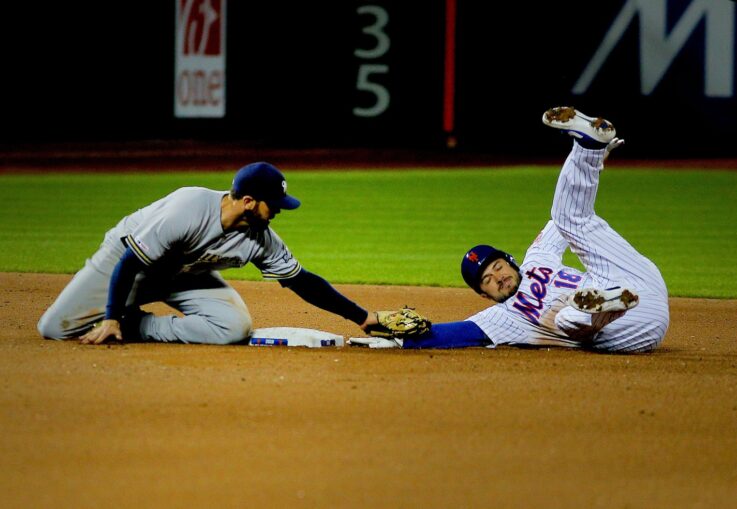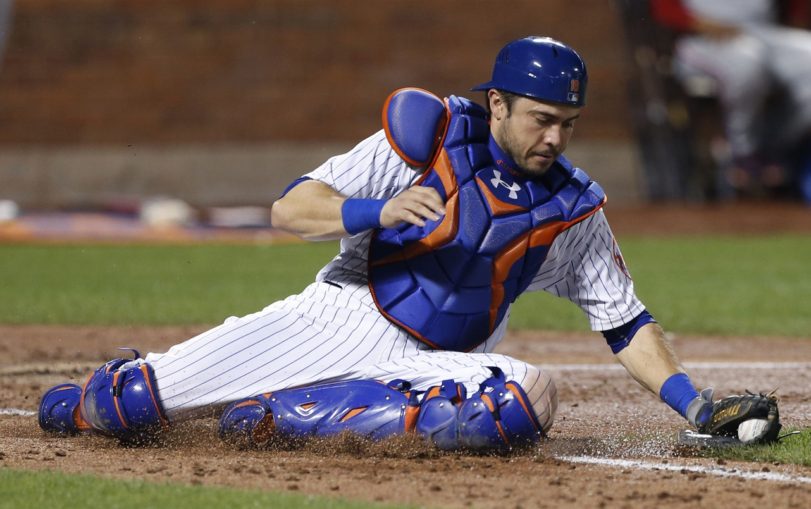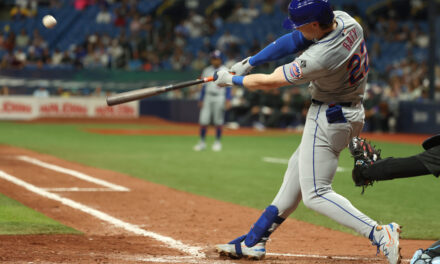
The Travis d’Arnaud era in New York has officially come to an end this evening, as the longtime catcher and former top prospect was granted his release five days after being designated for assignment. Tim Britton of the Athletic was the first to report the organization’s decision.
D’Arnaud, who had missed the majority of the 2018 season following a Tommy John surgery, was tendered a contract over the offseason, essentially winning the backup catcher spot over Kevin Plawecki (who was traded to the Cleveland Indians just a month later).
The Mets had an opportunity to release him at a league-minimum expense prior to the beginning of the season, but opted to absorb the $3.15MM instead as the backstop spent the first week on the injured list recovering from the procedure.
At this time, it is unknown if the Mets had any intentions of outrighting d’Arnaud off the 40-man roster, a decision he could have rejected in being granted free agency. Regardless, d’Arnaud will still be paid in full, despite managing just two hits in 23 at-bats this season.
Now 30 years of age, d’Arnaud was once regarded to be the game’s premier catching prospect, and headlined a trade package that included Noah Syndergaard, John Buck, and Wuilmer Becerra in a 2012 trade that sent then-Cy Young award winner R.A. Dickey to the Toronto Blue Jays alongside Josh Thole and Mike Nickeas.
At one point in 2013 ranked the sixth-best prospect in all of baseball by MLB Pipeline, d’Arnaud never managed to put it together – both at and behind the plate. Despite ranking eighth among franchise catchers in games played with 397, d’Arnaud mustered a disappointing .704 OPS with just 47 homers and 164 RBI while hitting the injured list on six separate occasions in his career.
He will be most vividly remembered for his struggles holding the running game, as his 22% caught-stealing rate the third-worst among 31 catchers with at least 3,000 innings since 2013. His inability to nab a single baserunner of the 11 who attempted steals in the 2015 Postseason marked a particular low point.
















